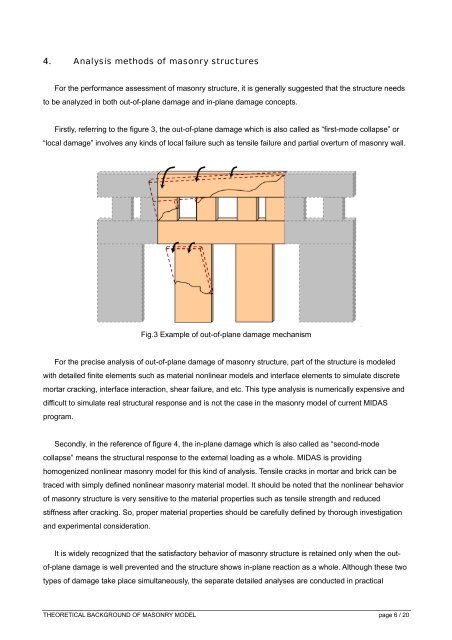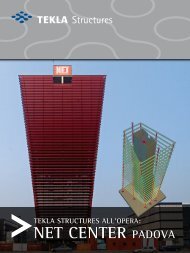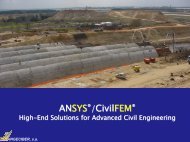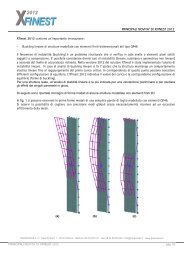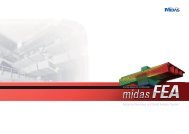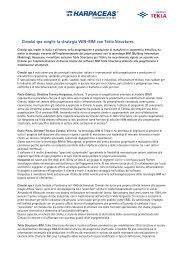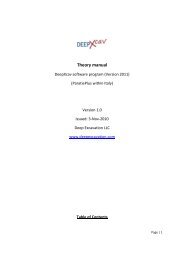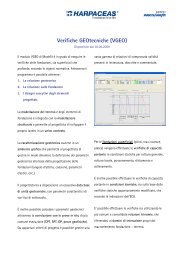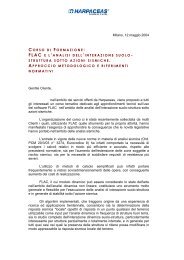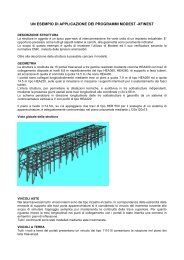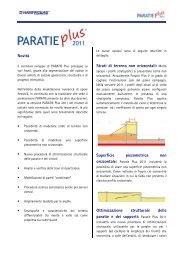THEORETICAL BACKGROUND OF MASONRY MODEL
THEORETICAL BACKGROUND OF MASONRY MODEL
THEORETICAL BACKGROUND OF MASONRY MODEL
You also want an ePaper? Increase the reach of your titles
YUMPU automatically turns print PDFs into web optimized ePapers that Google loves.
4. Analysis methods of masonry structures<br />
For the performance assessment of masonry structure, it is generally suggested that the structure needs<br />
to be analyzed in both out-of-plane damage and in-plane damage concepts.<br />
Firstly, referring to the figure 3, the out-of-plane damage which is also called as “first-mode collapse” or<br />
“local damage” involves any kinds of local failure such as tensile failure and partial overturn of masonry wall.<br />
Fig.3 Example of out-of-plane damage mechanism<br />
For the precise analysis of out-of-plane damage of masonry structure, part of the structure is modeled<br />
with detailed finite elements such as material nonlinear models and interface elements to simulate discrete<br />
mortar cracking, interface interaction, shear failure, and etc. This type analysis is numerically expensive and<br />
difficult to simulate real structural response and is not the case in the masonry model of current MIDAS<br />
program.<br />
Secondly, in the reference of figure 4, the in-plane damage which is also called as “second-mode<br />
collapse” means the structural response to the external loading as a whole. MIDAS is providing<br />
homogenized nonlinear masonry model for this kind of analysis. Tensile cracks in mortar and brick can be<br />
traced with simply defined nonlinear masonry material model. It should be noted that the nonlinear behavior<br />
of masonry structure is very sensitive to the material properties such as tensile strength and reduced<br />
stiffness after cracking. So, proper material properties should be carefully defined by thorough investigation<br />
and experimental consideration.<br />
It is widely recognized that the satisfactory behavior of masonry structure is retained only when the outof-plane<br />
damage is well prevented and the structure shows in-plane reaction as a whole. Although these two<br />
types of damage take place simultaneously, the separate detailed analyses are conducted in practical<br />
<strong>THEORETICAL</strong> <strong>BACKGROUND</strong> <strong>OF</strong> <strong>MASONRY</strong> <strong>MODEL</strong> page 6 / 20


